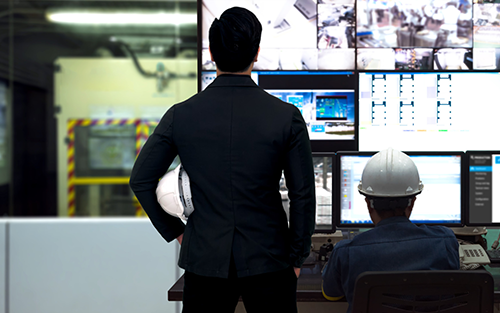K
Kathleen Martin
Guest
Cisco Systems estimates that the Internet of Things (IoT) was first born around 2008 or 2009, which makes it more than a decade old. But after another turbulent year of COVID-19, supply chain disruptions and technological shifts, what can we expect from the IoT in 2022? Here Claudia Jarrett, US country manager at automation parts supplier EU Automation, explores the major IoT trends for 2022—including 5G, edge systems, machine learning and more. Cisco’s belief that the IoT began in the late noughties is based on the definition of IoT as "simply the point in time when more 'things or objects' were connected to the Internet than people.” The things-to-people-ratio grew from 0.08 in 2003 to 1.84 in 2010. But when was the term ‘Internet of Things (IoT)’ first used? That’s believed to be 1985, when Peter T. Lewis, co-founder of the first US cellular phone company, Cellular One, gave a speech at the Congressional Black Caucus in which he said: "The Internet of Things, or IoT, is the integration of people, processes and technology with connectable devices and sensors to enable remote monitoring, status, manipulation and evaluation of trends of such devices." That definition of IoT is fairly consistent with how we understand it today. The questions is, how can manufacturers use digitalization to overcome the kinds of pandemic and supply chain-related turbulence we’ve seen in recent months?
The future is 5G
Gartner reports that global spending on 5G infrastructure grew by $19 billion in 2021 at an annual growth rate of more than 39 per cent, and these numbers are likely to increase dramatically in 2022. 5G networks are opening new opportunities to manufacturers including speeding-up the IoT with faster data transfer rates and more efficient connections and communication between devices. Therefore, 5G will be key to the growth of the IoT in 2022. However, with these opportunities come cybersecurity risks. Not only will 5G entail a physical overhaul of networks that include more IoT devices, but we’ll also see a transfer from hardware to software networks. Software, however, presents new cyber vulnerabilities, considering that these networks involve harvesting massive amounts of sensitive data share between increasing numbers of connected devices. Security experts hope that artificial intelligence (AI), machine learning and automation will offer the way forward, evolving alongside threats to critical systems. But what will AI and machine learning mean for the IoT?
Machine learning
“Artificial intelligence is poised to unleash the next wave of digital disruption,” reports McKinsey. Plant managers should be especially interested in AI algorithms that learn over time and get better at tasks by performing them repeatedly ― otherwise known as machine learning. Machine learning is especially useful when large volumes of data are being managed and increasingly captured by connected devices and the IoT. While those reams of data would be too much for a human worker to process, machine learning can rapidly analyze them in real-time to identify anomalies and report the findings to human workers in easily understandable form. Machine learning has proven useful at all stages of supply chain management. Motorcycle manufacturer Harley Davidson, for example, used a software called Albert that predicts which prospective customers are most likely to convert into sales, increasing sales by 40 per cent. Meanwhile, back on the shop floor, machine learning algorithms can detect, say, when a machine is working at reduced capacity, and alert decision makers when preventative maintenance is needed. However, in Lewis’ words, the only way to get the most from the IoT is “the integration of people, processes and technology”, meaning that human workers might have to be upskilled.
Continue reading: https://www.automation.com/en-us/articles/february-2022/major-iot-trends-expect-2022?listname=Automation%20&%20Control%20News%20&%20Articles
The future is 5G
Gartner reports that global spending on 5G infrastructure grew by $19 billion in 2021 at an annual growth rate of more than 39 per cent, and these numbers are likely to increase dramatically in 2022. 5G networks are opening new opportunities to manufacturers including speeding-up the IoT with faster data transfer rates and more efficient connections and communication between devices. Therefore, 5G will be key to the growth of the IoT in 2022. However, with these opportunities come cybersecurity risks. Not only will 5G entail a physical overhaul of networks that include more IoT devices, but we’ll also see a transfer from hardware to software networks. Software, however, presents new cyber vulnerabilities, considering that these networks involve harvesting massive amounts of sensitive data share between increasing numbers of connected devices. Security experts hope that artificial intelligence (AI), machine learning and automation will offer the way forward, evolving alongside threats to critical systems. But what will AI and machine learning mean for the IoT?
Machine learning
“Artificial intelligence is poised to unleash the next wave of digital disruption,” reports McKinsey. Plant managers should be especially interested in AI algorithms that learn over time and get better at tasks by performing them repeatedly ― otherwise known as machine learning. Machine learning is especially useful when large volumes of data are being managed and increasingly captured by connected devices and the IoT. While those reams of data would be too much for a human worker to process, machine learning can rapidly analyze them in real-time to identify anomalies and report the findings to human workers in easily understandable form. Machine learning has proven useful at all stages of supply chain management. Motorcycle manufacturer Harley Davidson, for example, used a software called Albert that predicts which prospective customers are most likely to convert into sales, increasing sales by 40 per cent. Meanwhile, back on the shop floor, machine learning algorithms can detect, say, when a machine is working at reduced capacity, and alert decision makers when preventative maintenance is needed. However, in Lewis’ words, the only way to get the most from the IoT is “the integration of people, processes and technology”, meaning that human workers might have to be upskilled.
Continue reading: https://www.automation.com/en-us/articles/february-2022/major-iot-trends-expect-2022?listname=Automation%20&%20Control%20News%20&%20Articles

